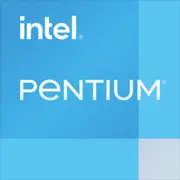Intel Pentium G3258

Intel Pentium G3258: The Budget Wind of Haswell in 2025
Introduction
Even 12 years after its release (2014), the Intel Pentium G3258 remains iconic among enthusiasts and budget build lovers. Its legendary overclocking potential and low cost make it an interesting option for specific tasks. But how relevant is it in 2025? Let's investigate the details.
1. Key Specifications: Haswell Legacy
Architecture and Manufacturing Process
The Pentium G3258 is built on the Haswell microarchitecture (22 nm). It is a dual-core CPU without Hyper-Threading support (2 cores / 2 threads), with a base frequency of 3.2 GHz. A key feature is its unlocked multiplier, allowing for overclocking even on budget motherboards.
- L3 Cache: 3 MB (sufficient for simple tasks).
- TDP: 53 W (energy efficiency is a major advantage).
- Integrated Graphics: Intel HD Graphics (4th Gen) — basic performance (e.g., 30 FPS in Dota 2 on low settings at 720p).
Performance
- Geekbench 6: 617 (Single-Core), 1078 (Multi-Core). For comparison: the modern Celeron G6900 (2023) scores around ~1800/3500.
- Real-life Experience:
- Office applications (Word, Excel) — runs smoothly.
- RetroArch emulation (PS1, N64) — stable.
- Modern browsers (Chrome with 10+ tabs) — potential stutters.
2. Compatible Motherboards: The Hunt for LGA 1150 Socket
Socket and Chipsets
- Socket: LGA 1150 (outdated, new boards have not been produced since 2017).
- Chipsets: H81, B85, H87, Z87, Z97.
- For overclocking, Z87/Z97 are essential (e.g., ASUS Z97-A).
- Budget H81/B85 boards can support overclocking through BIOS updates (unofficially).
Recommendations in 2025
- New Boards: Rare, prices range from $80 (ASRock H81M-HDS) to $150+ (MSI Z97 Gaming 5).
- Used Market: The main source, but there are significant risks of component failures.
- Advice: Look for boards with USB 3.0 and SATA III for SSD support.
3. Memory: Only DDR3
- Support: DDR3-1333/1600 (officially), but on Z97 can be overclocked to 2400 MHz.
- Maximum Capacity: 32 GB (rare boards with 4 slots).
- Compatibility in 2025: DDR3 is cheap ($20 for 8 GB), but new modules are almost not produced.
Example Configuration: 2x4 GB DDR3-1600 (Team Elite) — optimal for Windows 10/11.
4. Power Supply: Minimum Watts, Maximum Reliability
- Base Consumption: 53 W, but with overclocking to 4.5 GHz — up to 80 W.
- Recommendations:
- Without a Discrete GPU: PSU of 300 W (Be Quiet! SFX Power 3 300W, $40).
- With GPU (e.g., GTX 1650): 450 W (EVGA 500 BQ, $55).
- Important: Units with 80 Plus Bronze certification and short-circuit protection.
5. Pros and Cons: Who is it for?
Pros:
- Price: New processors — from $50 (rare), used — $20-30.
- Overclocking: Up to 4.5-4.7 GHz on air cooling (Cooler Master Hyper 212, $35).
- Energy Efficiency: Ideal for media centers or routers.
Cons:
- 2 Cores: Multitasking is limited (streaming + gaming — impossible).
- Outdated Platform: No support for NVMe, USB 3.1, Wi-Fi 6.
- Graphics: Only for basic tasks.
6. Use Cases
- Office PC: Document work, Zoom conferences.
- Retro Gaming: Emulators, indie games (Hollow Knight, Stardew Valley).
- Home Server: NAS based on Linux (OpenMediaVault).
- Learning: A first PC for builds and overclocking experiments.
Example Build:
- CPU: G3258 ($50) + Motherboard ASRock H81M-HDS ($80) + 8 GB DDR3 ($20) + 240 GB SSD ($30). Total: ~$180.
7. Comparison with Competitors
AMD Athlon 3000G (2020):
- Pros: 2 cores/4 threads, Vega 3 graphics, DDR4 support.
- Cons: Weaker in single-threaded tasks (Geekbench 6 Single-Core: ~550).
- Price: $70 (new).
Intel Celeron G5920 (2020):
- Pros: Modern socket LGA 1200, DDR4 support.
- Cons: No overclocking, higher price ($60).
Conclusion: The G3258 only wins in price (used) and overclocking.
8. Practical Assembly Tips
1. SSD is Essential: Kingston A400 240 GB ($30) will eliminate HDD bottlenecks.
2. Cooling: Even with overclocking, the stock cooler will suffice.
3. BIOS: Update to the latest version for compatibility with Windows 11.
4. OS: Windows 10 LTSC or Linux (Ubuntu LTS) for minimal load.
9. Final Conclusion: Who is the G3258 for in 2025?
- Enthusiasts: For experimenting with overclocking and building "retro PCs".
- Budget Builds: If you need a $200 PC for the internet and office work.
- Special Tasks: Media server, router, programming terminal.
Why not? For gaming, video editing, or AI work — it's outdated. But as a "digital artifact" and educational tool — it's invaluable.
If you find an old G3258 in your garage, don't rush to throw it away. Build a budget PC around it, overclock it, and see for yourself: the technology of 2014 can still amaze!
Basic
CPU Specifications
Memory Specifications
GPU Specifications
Miscellaneous
Benchmarks
Compared to Other CPU
Share in social media
Or Link To Us
<a href="https://cputronic.com/cpu/intel-pentium-g3258" target="_blank">Intel Pentium G3258</a>